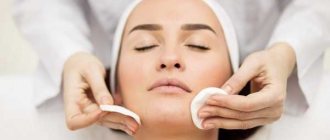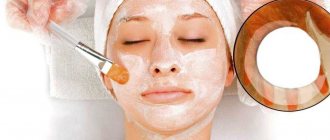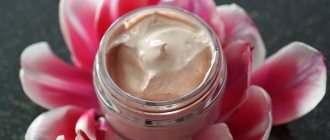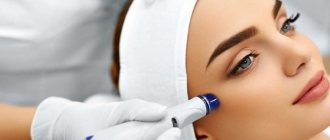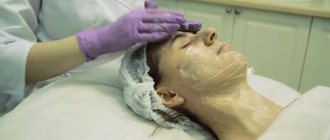Acid peels - the most important information
Professional skin acid therapy is a specialized treatment that helps exfoliate and remove dead skin cells. For the procedure to be completely safe and successful, the type of acid should be selected according to the individual needs of the patient.
At our Center for Aesthetic Medicine in St. Petersburg, skin peelings are carried out by experienced specialists, and the procedure is preceded by a consultation, during which the doctor helps you choose the solution most suitable for improving the appearance of the skin and eliminating its defects. The depth and intensity of acid penetration into the skin is determined by the type, concentration, pH of the acid, as well as the number of layers applied and the duration of treatment.
Depth and intensity of acid penetration into the skin
Why is it important to prepare for peelings?
Peeling procedures have one common goal - to free the skin from a dense layer of dead cells and stimulate the internal processes of natural rejuvenation. The synthesis of keratin, the protective epidermal surface of the skin, occurs continuously. Without peeling, the skin sheds dead particles on its own, but this process is delayed and slows down regeneration. Without cosmetic help, the complexion becomes dull, the skin thickens, the pores become clogged with remnants of sebum and impurities, which provokes the proliferation of bacteria in the tubules of the hair follicles and inflammation.
In a week, various peelings help get rid of keratinized epithelium, give the facial skin the opportunity to “breathe”, receive nutrition and completely renew itself. Acid, hardware or mechanical effects on the skin are a special and controlled violation of its integrity to activate restoration.
Injuring the skin with acids, ultrasonic or laser waves, abrasives or brushes leads to peeling off the surface layer and stimulating the production of collagen and elastin threads for the construction of a new “framework”. Peeling helps to thin the dead epidermis, but strengthen the dermis by increasing blood flow, forming springs of protein fibers and hyaluronic acid molecules. Therefore, as a result of exfoliation, dull and loose skin with many imperfections is replaced by smoothness, a healthy complexion and the absence of acne.
The thickened surface epidermis exfoliates in different ways during peeling. Hardware and abrasive techniques allow you to carefully sand away dead skin, while acid and enzyme peels “dissolve” dead skin. Therefore, preparation for peeling depends on the type of exfoliation.
Home or salon pre-peeling preparation helps:
- loosen and smooth out the keratinized epidermis, so that the acidic peeling composition will act evenly;
- reduce the risk of side effects and complications, which include acne, age spots and erythema;
- activate the skin's immunity and ability to regenerate.
The first stage of pre-peeling skin preparation, regardless of what exfoliation will be performed in the future, is a consultation with a professional cosmetologist. This step is especially important if you are a beginner and using peeling for the first time.
At the introductory consultation, the doctor will assess the condition of the skin, determine its type, sensitivity and indications for peeling. Then the cosmetologist will find out whether the patient has prohibitions for performing exfoliation, which include chronic and dermatological diseases, oncology, pregnancy, lactation period, open wounds on the skin and exacerbation of the herpes virus. Do not forget to warn your specialist about systemic use of hormonal drugs, antibiotics and other medications. This will also influence the choice of peeling and whether it can be performed.
After the cosmetologist collects medical history data and laboratory test results (if they were necessary), the patient is selected for the type of peeling that is suitable in depth and type. The doctor will tell you how to prepare the skin for exfoliation, how the session will take place, what consequences to expect immediately after the procedure, and what the effect will be after rehabilitation. At the same time, the specialist will decide on the need for topical anesthesia.
For superficial types of acid and physical peels, as well as enzyme exfoliation, special preparation is not necessary. Medium and deep procedures are performed only after two weeks of preparatory measures.
How to prepare for professional skin exfoliation with acid peeling?
We offer our patients treatment based on various acids. Among the most intense peeling procedures recommended after vacation are peels with strong acids. However, this method requires proper preparation of the skin.
- The skin should be healthy, not damaged or heavily tanned. It doesn't have to be completely pale, but it can't be a strong, fresh tan. Therefore, before peeling, you should refrain from using self-tanning, shaving, hair removal products and those that cause general irritation to the selected treatment area.
- When planning a stronger acid peel, you should consider the period before and after the procedure. You should stop taking photosensitizing drugs, such as retinoids, and herbal teas, such as St. John's wort.
- During this period, exotic trips are not recommended - do not plan them before the procedure and for the time recommended by the specialist after it, in order to give the skin time to recover.
Acid-exfoliated skin is sensitive to the sun, so use high UVA and UVB filters and keep your skin moisturized. If you want to do an acid peel, but are planning a vacation or will be in the sun, our specialists can offer you gentler year-round peels.
Skin preparation 1 week before the procedure
A week before the procedure, a number of restrictive rules must be strictly observed . Otherwise, the peeling procedure will become uncontrolled and the penetration of acids may be deeper and more traumatic.
1. Avoid visiting bathhouses, saunas and hamams
Thermal effects on the skin are also a traumatic factor, even if outwardly this manifests itself only as slight redness and rapid recovery. It takes time for complete regeneration.
2. Start daily use of protective cream with SPF30
For timely blocking of melanocyte hyperactivity and preventing the appearance of pigment spots after the procedure.
3. Do not use abrasive scrubs
4. Avoid traumatizing facial skin
Traumatic agents include: professional procedures (facial cleansing), hair removal and depilation, hair coloring, etc.
5. Start using lightening agents
It is necessary if the peeling procedure is planned to lighten pigmentation, or if there is a tendency to the appearance of age spots.
Agents that block melanogenesis and have minimal irritating properties (kojic and azelaic acid) are recommended.
Are you worried about pigment spots? Opt for a specialized whitening peel that can be used even in the summer months? Details here.
Tool example:
Serum "DermaKlia" DermaQuest is an ideal product for pre-peel preparation. Contains a combination of acids in a low but working percentage:
- Glycolic acid 5% is a delicate keratolytic, has an antiseptic and moisturizing effect.
- Lactic acid 3% is a keratolytic, moisturizes and restores the barrier function of the skin.
- Azelaic acid 2.5% - sebum-regulating, kerato- and comedolytic effect, whitens and has an antibacterial effect.
- Salicylic acid 2% - antiseptic, sebo- and comedolytic. Superficial keratolytic effect. Gently and effectively eliminates hyperkeratosis and dissolves the contents of pores.
- Dermasir-10 (Lilac stem cells) - antimicrobial, anti-inflammatory effect, pronounced sebum-regulating effect. Promotes skin tightening.
- AC.NETTM is a complex that optimizes the amount and composition of sebum (secretions of the sebaceous glands).
Application: Apply daily to clean skin in the evening.
How does acid peeling work?
During the procedure, the specialist applies a certain number of layers of acid of the appropriate concentration to the skin. The drug penetrates the skin, which leads to controlled damage, and then stimulates the renewal processes and gradual exfoliation of the skin.
How does acid peeling work?
The acid helps cleanse the sebaceous glands, removing residual epidermal cells. When the old epidermis completely sloughs off, a new layer of skin appears. The renewed layer of skin is extremely sensitive to the effects of nutrients from the cosmetics used, and due to the fact that it does not contain contaminants, it tolerates all care procedures well.
Depending on the acid solution, exfoliation can vary in intensity - sometimes so mild that it is completely unnoticeable at first glance. The process proceeds very gently and at shallow depths. The frequency of repeated procedures also depends on the acid concentration. Intensive peels can be performed no more than once every few months, while more delicate acid treatments can be used every 4-6 weeks until optimal results are achieved.
The result after one acid peeling procedure before and after
What should you not do before the procedure?
In order for the procedure to go smoothly, with maximum effect, and to have no side effects, it is necessary to clearly understand what actions are strictly prohibited before starting it.
Visit the swimming pool and solarium
Before exfoliation, you should never visit a solarium or swimming pool. If superficial peeling is planned, then it is necessary to limit visits to places where artificial tanning services are provided 2-3 days before the appointed date.
If you are planning to carry out a deep tissue cleansing, then the period of refusal from the solarium increases to a month. After all, a shorter time will lead to the fact that the entire effect of visiting a solarium will simply be destroyed. In addition, reducing melanin synthesis helps prevent the formation of age spots on the skin.
When visiting a bathhouse, the body experiences increased temperature stress , as a result of which profuse sweating begins.
This may contribute to severe skin irritation in the event of a subsequent peeling procedure. This can even lead to a 1st degree thermal burn.
Laser and wax hair removal is prohibited
After depilation, the mouth of the follicle remains open for up to 2 days. If you do exfoliation immediately after removing unwanted hair, it is possible to trigger the development of a serious complication - folliculitis. This pathology is an infection of the hair follicles. The main danger is that this disease can often develop into a chronic stage.
At least 4 days before peeling, you should stop depilating. In order not to have an additional effect on the skin that is in a stressful situation. Any mechanical damage, or even friction, is prohibited.
Is acid peeling right for you?
As mentioned, the skin being treated with acid must be healthy and the type of acid must be appropriate for the skin type. Our cosmetic clinic offers several different treatments that allow you to choose the right option according to the individual requirements of the patient's skin.
Contraindications to the procedure include open wounds and active inflammation, burns and frostbite, pregnancy, diabetes, autoimmune and connective tissue diseases, and the use of retinoid therapy.
Indications:
- Pigmentation and photoaging;
- Grey, earthy, uneven color;
- The need to smooth and improve texture;
- Loss of firmness and elasticity;
- The need for skin rejuvenation;
- Skin dehydration;
- Visible pores;
- Acne of mild to moderate severity;
- Oily skin, excess sebum production;
- Minor scars and other imperfections.
Professional pre-peeling products
The pre-peeling preparation itself consists of applying special cosmetics. It is aimed at adapting the skin to the exfoliation procedure.
Tasks facing pre-peeling:
- softening of the stratum corneum;
- smoothing skin texture;
- lightening pigment spots;
- preparation for deep peeling.
Benefits of pre-peeling:
- ensures uniform penetration of reagents;
- reduces the risk of peeling after peeling.
Aloe gel with geranium oil
A professional preparatory product with geranium oil is intended to unclog skin ducts and cleanse them of impurities and keratinized scales.
The gel perfectly prepares the skin for mechanical cleaning. It can be used as a soothing and moisturizing mask.
The product has a significant cooling effect and is suitable for any skin type. It must be applied to cleansed skin in a thick layer for 20-30 minutes. Residues of the product are removed with wet wipes or cotton pads.
Cleaning emulsion
Using a pre-peel emulsion is the first important step to prepare the skin for a chemical peel procedure. The presence of a combination of glycolic and fruit acids promotes gentle skin whitening and gentle exfoliation of dead skin cells.
The cleaning emulsion should not be used undiluted. Otherwise, the pre-peeling cosmetic may cause a tingling sensation when it comes into contact with hypersensitive skin. In this case, you should immediately rinse with cool water.
Anti-aging care toner
Anti-aging pre-peeling tonic is a revolutionary innovation in cosmetic care. It is designed specifically to optimize the rejuvenation program for mature skin. Thanks to the combination of active ingredients and salicylic acid, the toner prepares the skin for subsequent procedures, significantly increasing the effectiveness of the anti-aging care program.
It is very important to use professional medications prescribed by specialists before the peeling procedure. Usually these are products based on fruit acids, which are part of the main exfoliation product.
Acids? They exfoliate, rejuvenate and make your skin beautiful!
Acid treatments are a great treatment for people who want to refresh their skin after summer, reduce acne scars, seborrhea, blackheads, pigmentation changes or fine lines around the eyes and mouth. If you want your skin to become firmer, smoother, more radiant and have a youthful, healthy appearance, schedule a visit today and book an acid peel at our beauty clinic.
Remember that regular exfoliation helps keep your skin in good condition and normalize its condition. Peelings are a great way to prevent aging!
How to degrease the skin?
Chemical exfoliation, based on fruit acids, differs significantly in the degree of penetration into the skin. The deeper the leakage, the more the epidermis needs preparation:
- Before the procedure, it is necessary to remove makeup and wash thoroughly to completely degrease the skin.
- After this, you need to additionally wipe your face with tonic or lotion to finally get rid of unwanted sebum.
We recommend: What is milk peeling, what types are there and how to do it at home?
Competent pre-peeling preparation helps to significantly improve the results of the procedure itself. Thanks to this, the skin texture is better evened out, and it heals faster after exposure.
Who needs facial peeling?
Facial peeling is a cosmetic procedure in which a specialist doctor removes layers of skin, thereby starting the process of natural regeneration. This way the skin is renewed and rejuvenated. After peeling, facial skin looks elastic, smooth and radiant. To solve serious defects, the cosmetologist uses combined facial peeling. Based on the level of damage, they are divided into superficial facial peeling, medium facial peeling, and deep facial peeling.
Indications for chemical peeling of facial skin include:
- “Tired” skin;
- Fine wrinkles;
- "Earthy" complexion or complexion;
- Disruption of microrelief and decrease in turgor;
- Hyperkeratosis;
- Hyperpigmentation;
- Oily or very dry skin;
- Pimples, acne;
- Scarring.
Purpose of a chemical peel
The key goal of chemical peeling is to neutralize various cosmetic defects - mesh and expression wrinkles, age spots, acne scars, enlarged pores, comedones and other signs of aging or “problematic” skin.
Damage to the epidermis is achieved by applying a special composition with a certain concentration of organic acids to the surface of the skin. Against the background of a kind of stress, skin cells begin to regenerate and proliferate. In the middle and deep layers, the process of elastin and collagenogenesis starts - the production of young, strong and intact fibers of the “proteins of youth” - elastin and collagen. As a result, the skin becomes denser, elastic and hydrated.
